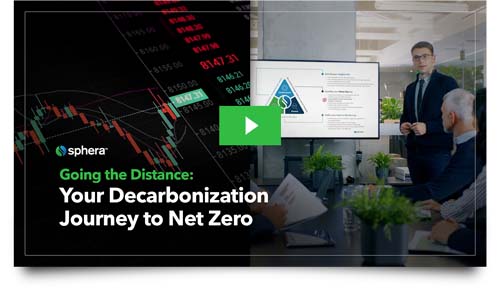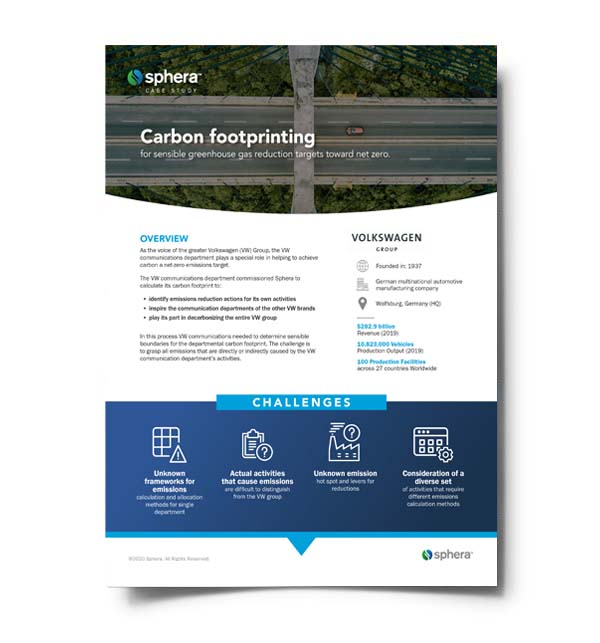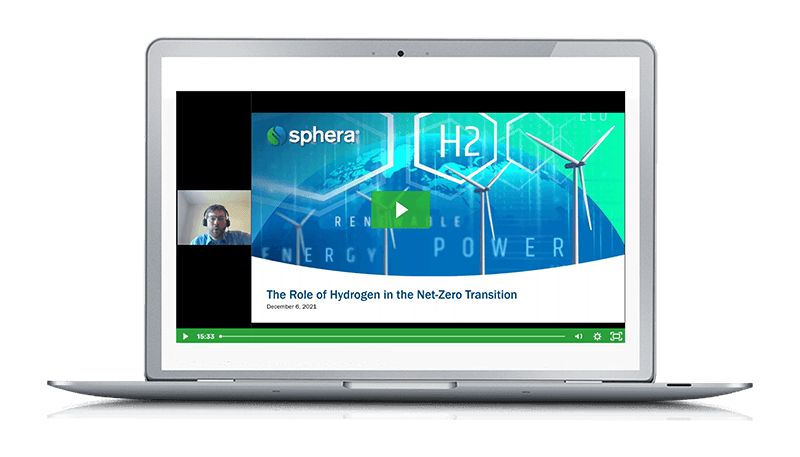As calls for greater action on climate change get louder, more companies are working to reduce their carbon footprints. For example, since 2021, the number of signatories for the Science-Based Targets initiative (SBTi) has increased from 2,253 to over 5,000. And more than 400 companies have signed on to The Climate Pledge, which aims to reach net zero by 2040.
While these are positive developments, too often companies are only measuring greenhouse gas (GHG) emissions at the corporate level. According to Marc Binder, vice president of global sustainability consulting at Sphera, who spoke at Sphera’s recent ESG Virtual Summit, companies should also be measuring emissions at the product and supply chain levels in order to drive progress on decarbonization strategies.
Scope 3 emissions—the emissions that stem from a company’s product portfolio and supply chain, upstream and downstream—can account for 60 to 99% of a company’s carbon footprint. This makes Scope 3 emissions a critical decarbonization target for companies aiming to reach net zero. But often when companies are measuring their Scope 3 emissions, they’re using economic input-output data, which relies on broad estimates and doesn’t paint an accurate picture of a company’s emissions impact.
Companies can conduct a life cycle assessment (LCA) to get a more holistic view of the emissions that come from their product portfolio. An LCA is a systemic analysis of the potential environmental impacts of a product or service—including the product carbon footprint (PCF)—from cradle to grave. LCAs can provide information on how the materials that make up the product are extracted, how the product is made, how it’s used, and ultimately, how it’s disposed of.
Furthermore, companies can transform and aggregate all the LCA results from their product portfolios into Scope 3 accounting for all relevant categories at the organizational level. This helps them meet corporate value chain Scope 3 accounting standards and requirements.

Leveraging LCAs to Decarbonize at the Product Portfolio Level
LCAs are powerful, science-based tools that companies can leverage to drive progress on climate goals. Companies can achieve greater decarbonization by using LCAs to:
- Establish an emissions baseline. Companies can use LCAs to quantify GHG emissions produced at each stage of the product life cycle for their different product portfolios in a way that’s standardized, accurate, consistent and harmonized.
- Identify hotspots. LCAs can help companies identify emissions hotspots within their products’ life cycle across all 15 of the Scope 3 categories, providing insights on where to focus decarbonization efforts.
- Create a decarbonization strategy. Companies can use LCAs to develop models for Scope 3 calculations, gain information for emissions reduction potential and explore decarbonization scenarios—all of which help companies determine a long-term strategy for reducing emissions.
Establishing the Business Case for LCA Automation
LCAs provide a wealth of information, but performing them is a labor-intensive process that takes time. There are a number of pain points involved with conducting LCAs that companies must contend with, including dealing with disparate data systems and handling massive LCA backlogs.
For companies that have extensive product portfolios and ambitious climate goals, integrating data and systems and scaling LCAs will be essential for complying with regulations and meeting climate targets and stakeholder demands.
One such company is Eastman, a global specialty materials company. The company is taking an integrated approach to sustainability, where LCAs are just one part of its larger environmental, social and governance (ESG) strategy. Eastman has committed to reducing its absolute Scope 1 and 2 emissions by one-third by 2030 and reaching carbon neutrality by 2050 while comprehensively understanding its downstream Scope 3 emissions to drive its decarbonization strategy.
In order for Eastman to meet its goals, it will need to scale its LCA processes to gain a clear picture of its GHG hotspots. It will also need to build GHG mitigation scenarios across the value chain for its large product portfolio. Automation provides an avenue for companies to conduct LCAs at scale to meet these needs at a fraction of the time and cost.
At Sphera’s ESG Virtual Summit, Paul Fanning, a member of the life cycle assessment team at Eastman, described how LCA automation can accelerate decarbonization efforts and enable companies to meet regulatory and stakeholder demands in a way that’s transparent.
As Fanning described in the session, many chemical companies like Eastman are setting sustainability goals that will increase the need for product environmental footprints. And given the inherent complexity involved with the products produced by the chemicals industry, having full, automated LCA metrics on a company’s product portfolio in addition to its carbon footprint will be a business necessity.
According to Fanning, LCA automation can help meet the needs of chemical manufacturers by providing:
- The ability to conduct and analyze environmental product footprints for a company’s full product portfolio across the value chain.
- The ability to calculate complete LCAs that include information on a product’s environmental impacts—including land and water use—in addition to the carbon footprint.
- On-demand LCAs that help meet stakeholder demands and business needs.
- Greater transparency that will help align product portfolios with climate goals and strategies.

Creating a More Sustainable Future with LCAs
To achieve the progress needed to reach net zero by 2050, companies will need to gain a more holistic picture of their Scope 3 emissions. LCAs provide the data and insights needed to decarbonize companies’ product portfolios and supply chains.
Chemical companies and others with complex products and supply chains will need full LCA metrics on their product portfolios, including the carbon footprint and other environmental impacts, to meet climate goals and regulatory demands. LCA automation will play an essential role in providing this information in a way that’s transparent and auditable.
With the help of data, software and expertise, companies can accelerate their decarbonization efforts and secure a more sustainable future. The road to net zero and greater product sustainability is a long one; LCAs can help companies chart their course.
This blog was adapted from a session titled, “Building a Culture of Action-Oriented Decarbonization Programs Starts with LCAs” from Sphera’s 2nd Annual ESG Virtual Summit. Watch the full session here.










